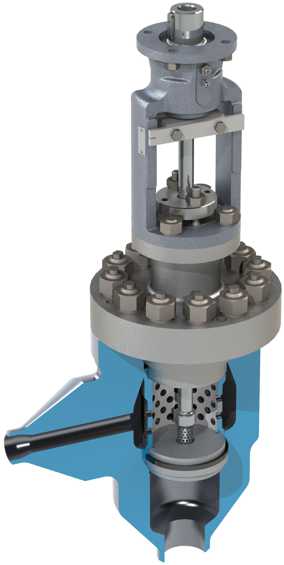Shut-off valves
Tasks
Tight sealing when closed and minimum obstruction to flow after opening. To minimize flow resistance, there are as few sharp changes of direction and diameter as possible, and protruding edges that disrupt the flow and cause vortex formation are avoided.
Versions
Cast or forged valves in straight, angled or Z form, with welded studs as per DIN, ANSI or other standards.
Advantages
- No cavitation
- No oscillation or vibration
- Long service life
- Easily replaceable interior parts for simple maintenance
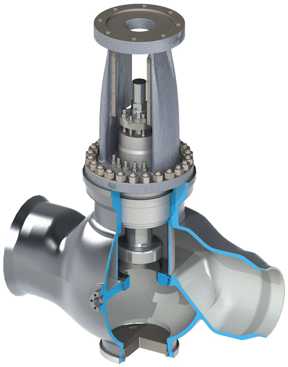
Motive steam cooler
Tasks
Cooling steam in heat-driven power plants
Versions
Forged steel housing. material: 13CrMo44 connecting flanges to steam pipe: DN 150-200-250 PN 16-25-40
Advantages
- Externally mixing motive steam nozzle
- Excellent misting and small droplet size for better heat transfer and fast evaporation
- Good regulation at partial load.
- Exact injection flow metering for precise temperature adjustment
- Pressure-controlled cooling water injection
- Central annular nozzle for even cooling of the steam flow
- Drip-tight when the plant is shut down
- All installed parts can be replaced without machining
- Protective pipe in the cooler cooling water supply line prevents thermal shock
- Simple maintenance with easy-to-replace cooler insert
- Low wear thanks to constant cooling water pressure across the entire load range
The motive steam cooler shown here is an injection nozzle with spring-regulated aperture control and an externally mixing spray nozzle. The quantity of water injected is regulated by an upstream control valve. This valve adjusts the injection water pressure in front of the nozzles according to the load.
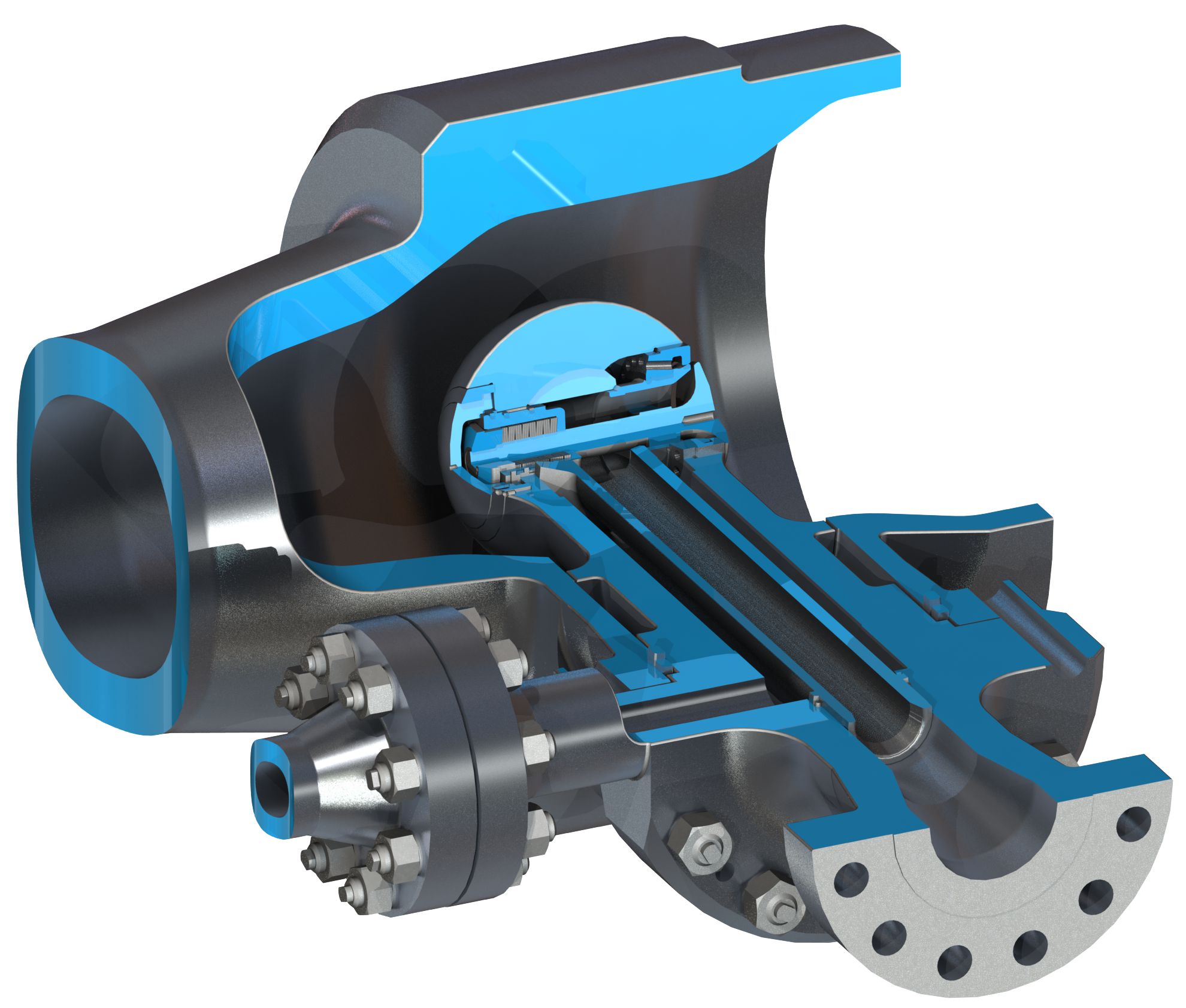
Injection cooler
Tasks
High-temperature injection coolers control the temperatures in boiler (high pressure) superheaters and reheaters.
Versions
Forged housing with flange connections or welded studs
Advantages
The regulated injection coolers are a unit consisting of a cooling water control valve and a nozzle head.
- Fine misting of cooling water even at partial load
- Exact metering of injection flow for precise temperature adjustment
- Piston rings seal unused nozzles for high adjustment ratio (1:25)
- Pre-throttling in 1 to 3 control stages ensures low wear even with steep pressure gradients
- Drip-tight in closed position
- Upstream dirt filter as standard
- All installed parts can be replaced without machining
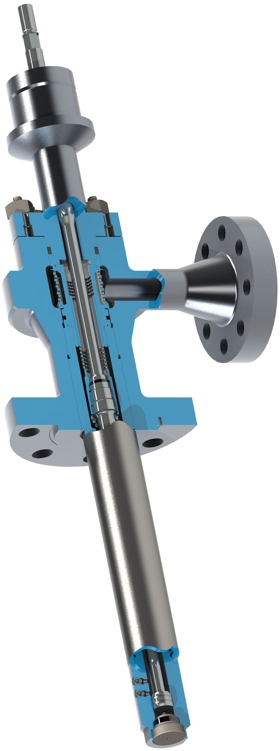
Discharge control valve
Tasks
Discharge control valves are used to discharge (boiling) water from the boiler drum during start-up or low-load operation. On Benson boilers, the valve is used as a start-up valve to ensure the (boiling) water level in the start-up drum remains constant. The water can be returned to the cycle in three different ways:
- via the circulation pump and the circulation control valve
- via the expansion unit at atmospheric pressure
- into the feedwater tank
Versions
Forged valves in angled form, with welded studs as per DIN, ANSI or other standards. Outlet 2–3 sizes larger than the inlet due to evaporation. A hardened sleeve protects the seat outlet from erosion.
Advantages
- No cavitation
- No erosion
- No oscillation or vibration
- Long service life
- Precise characteristics
- Easily replaceable interior parts for simple maintenance
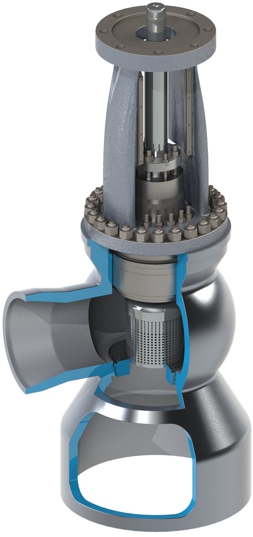
Condensate control valves
Tasks
Regulating the condensate level in the HP preheaters.
Versions
Forged valves in straight, angled or Z form, with welded studs as per DIN, ANSI or other standards.
Advantages
- No cavitation
- No erosion
- No oscillation or vibration
- Long service life
- Precise characteristics
- Easily replaceable interior parts for simple maintenance
